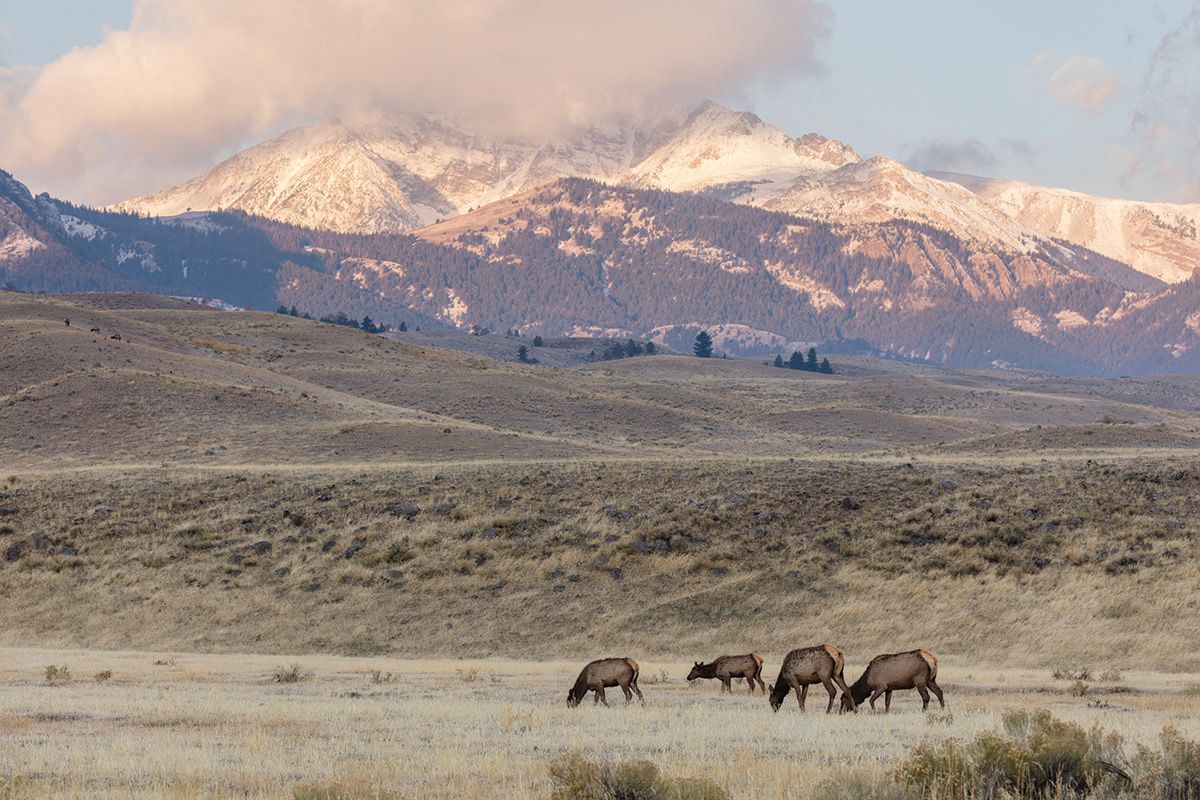Hidden Paths Of Greater Yellowstone’s Wildlife Migration

Have you ever wondered where animals go when they leave Yellowstone? The Greater Yellowstone Ecosystem is a vast area where wildlife roams freely. Every year, animals like elk, bison, and wolves travel long distances to find food and shelter. These migrations are crucial for their survival. Watching these creatures on the move is a sight to behold. Imagine seeing a herd of elk crossing a river or a pack of wolves navigating through snowy forests. This natural phenomenon is not just about animals moving; it's a story of survival, adaptation, and the incredible beauty of nature.
Hidden Paths of Greater Yellowstone's Wildlife Migration
The Greater Yellowstone Ecosystem is a marvel of nature. Spanning parts of Wyoming, Montana, and Idaho, it hosts some of the most incredible wildlife migrations in North America. These hidden paths are not just routes; they are lifelines for many species. Let's uncover some of these secret trails.
Elk Migration Routes
Elk are among the most iconic animals in Yellowstone. Their migration paths are both fascinating and essential for their survival. Here are some key routes:
Jackson Hole to Yellowstone: Every spring, thousands of elk move from the National Elk Refuge in Jackson Hole to the lush meadows of Yellowstone. This journey covers over 60 miles and is crucial for their feeding and breeding.
Gros Ventre Range: Elk also migrate through the Gros Ventre Range, a less-traveled path that offers stunning views and a quieter experience for those lucky enough to witness it.
Madison River Valley: In the fall, elk head towards the Madison River Valley. This route provides them with ample food and a safer environment to avoid predators.
Bison Migration Paths
Bison, the largest land mammals in North America, have their own unique migration patterns. These paths are vital for maintaining the health of the herds and the ecosystem.
Lamar Valley to Hayden Valley: Bison migrate between these two valleys, covering around 30 miles. This path ensures they have access to fresh grazing areas throughout the year.
Firehole River Corridor: Another significant route is along the Firehole River. This path is especially important during the winter when bison seek thermal areas to stay warm.
Gardiner Basin: In the spring, bison move towards the Gardiner Basin. This migration helps them find new pastures and avoid the harsh conditions of higher elevations.
Pronghorn Antelope Trails
Pronghorn antelope are known for their incredible speed, but their migration routes are equally impressive. These paths are some of the longest in North America.
Path of the Pronghorn: This famous route stretches from Grand Teton National Park to the Upper Green River Valley. Covering over 150 miles, it is one of the longest land migrations in the Western Hemisphere.
Red Desert to Hoback Basin: Another significant route is from the Red Desert to the Hoback Basin. This path is essential for the pronghorn's survival, providing them with food and safe passage.
Grizzly Bear Movements
Grizzly bears are solitary creatures, but their migration paths are crucial for their survival and the health of the ecosystem.
Yellowstone to Teton Wilderness: Grizzlies often move between Yellowstone and the Teton Wilderness. This path allows them to find food and mates while avoiding human activity.
Absaroka Range: Another important route is through the Absaroka Range. This rugged terrain provides grizzlies with a safe haven and abundant food sources.
Wolf Pack Territories
Wolves are known for their pack behavior and territorial nature. Their migration paths are vital for maintaining the balance of the ecosystem.
Northern Range: Wolves in Yellowstone's Northern Range follow specific routes to hunt and patrol their territory. These paths are essential for their survival and the health of the prey populations.
Beartooth Plateau: Another key area for wolf migration is the Beartooth Plateau. This high-altitude region offers wolves a unique hunting ground and a place to raise their pups.
Moose Migration Routes
Moose are the gentle giants of Yellowstone. Their migration paths are crucial for finding food and avoiding predators.
Gallatin Range: Moose often migrate through the Gallatin Range, a path that provides them with ample food and shelter.
Shoshone River Valley: Another important route is along the Shoshone River Valley. This path helps moose find new feeding grounds and avoid the harsh winter conditions.
Conclusion
The hidden paths of Greater Yellowstone's wildlife migration are a testament to the resilience and adaptability of these incredible animals. By understanding and protecting these routes, we can ensure the survival of these species and the health of the entire ecosystem.
The Magic of Yellowstone's Wildlife Migration
Yellowstone's wildlife migration is a marvel of nature. Animals like elk, bison, and wolves travel vast distances, showcasing their resilience and survival instincts. These migrations are vital for maintaining the ecosystem's balance, ensuring species thrive and habitats remain healthy.
Witnessing this migration offers a unique glimpse into the natural world. It reminds us of the importance of conservation efforts to protect these animals and their habitats. By supporting conservation initiatives, we help preserve this incredible phenomenon for future generations.
Exploring Yellowstone's hidden paths reveals the intricate dance of wildlife migration. It deepens our appreciation for nature's wonders and the interconnectedness of all living things. So, next time you visit Yellowstone, take a moment to observe and cherish the incredible journeys of its wildlife. Their stories are a testament to the beauty and complexity of our natural world.

